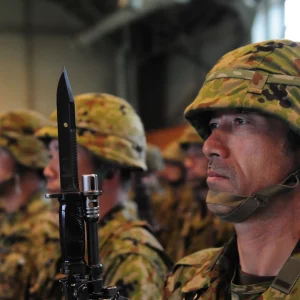
What began as a factory fire months ago has turned into turmoil through Bangladesh. In April of 2013, Rana Plaza in Bangladesh toppled down, killing 1,129 people and injuring 1,900. This was the deadliest factory accident in all of history, topping the eight-story Spectrum factory collapse (also in Bangladesh) eight years earlier. As a result of this, companies met in Geneva in order to try and calculate the amount of compensation owed to the families of the injured in the Rana Plaza disaster. Fueled by this meeting’s failure to come to any realistic or even helpful conclusion, the people of Bangladesh had fled to the streets in an attempt to take what should be their rights to compensation and higher wages. In this country, the second largest garment exporter in the world after China, the people wait as the government, factory owners and labor organizers meet and concretely discuss an increase in the minimum wage.
At the time of publication the country still awaits a verdict on a new minimum wage. However, whatever the outcome, it is important to understand what caused much of this turmoil in the first place. For one, a fair amount of the protestors’ anger stems for the view that the large companies who come to their factories with unrealistically high demands refuse to take the blame for the lack of workers’ rights. This is perhaps most evident in the failure of the conference in Geneva. Organized by the global labor union IndustriALL with the International Labour Organization functioning as a neutral chair, this meeting was meant to improve industry safety and to attempt to figure out how to recompense the Bangladeshi workers and families affected by the Rana Plaza collapse. IndustriALL calculated that a total due compensation of $74,571,101 should be rewarded to Dhaka retailers, factory owners and government. However, many of the Western companies involved did not even show up. Only one brand, the United Kingdom’s retailer Primark, provided any compensation to its workers. Larger companies such as Wal-Mart and Mango did not, at the time of the conference, want to take a share of the blame. These companies’ lack of interest in helping out the Bangladeshi workers helped motivate the protests on the streets.
The roots of the problem of that conference in Geneva can be even traced further back. A lot of the problem is based on how business is done in Bangladesh. A large issue is that Western retailers have larger demands than a factory can possibly meet. This causes the factory owners to send some of their work to smaller producers. Often times those smaller producers own smaller, uninspected factories with workers who are now put at risk by the influx of orders. Though the Bangladeshi factory owners’ are partly to blame, Western clothing companies are not free of guilt either. Western retailers award contracts to manufactures even when they know the company does not have enough machines or employees to do the job, thus encouraging such outsourcing of orders.
Now we can understand that it is because of both the failure of the conference in Geneva and the weakness in how business is transacted that 20,000 workers took to the streets to protest for an increase in the monthly minimum wage from $38 to $100. Factory owners were at first unwilling to increase the monthly wage past $45, claiming that it would inflate their construction costs and drive away business. Police fired tear gas and rubber bullets while workers responded by throwing broken bricks. Three hundred factories in the Gazipur and Savar Industrial Zones (on the outskirts of Dhaka) closed down and those which remained open were attacked.
In response, a governmental panel has formed to determine that it would increase wages greatly and manufactures say they will raise wages by as much as the panel decides despite their earlier objections. Although this may ultimately end up being only the eye of the storm, there are hopes that this will bring a conclusion to the issue of Bangladeshi minimum wage for now. In fact, the government has already stated that it will increase the wages by November, a month earlier than the previous deadline.
From the factory fires to the conference in Geneva to the rights in the streets and now to the tranquil of the city, it seems that the Bangladeshi garment industry has experienced the labor roller coaster of a lifetime in under a year. Yet on this ride, much of this conflict has brought to light other underlying issues. Is even a $100 monthly minimum wage enough? Why did the factory fires happen in the first place? What can we do to keep the people who make our most basic necessity, our clothes, safe?
This article originally appeared in the Fall 2013 print edition, which can be found here.





Be First to Comment